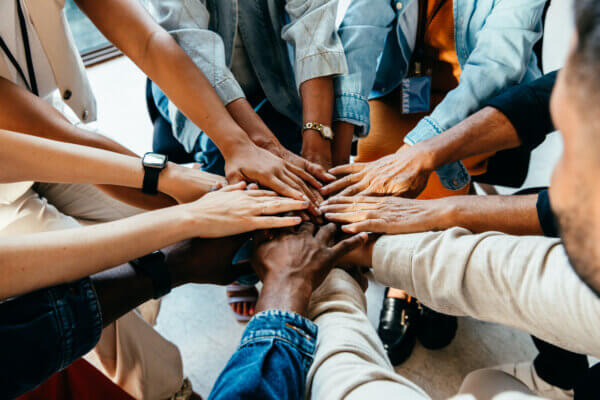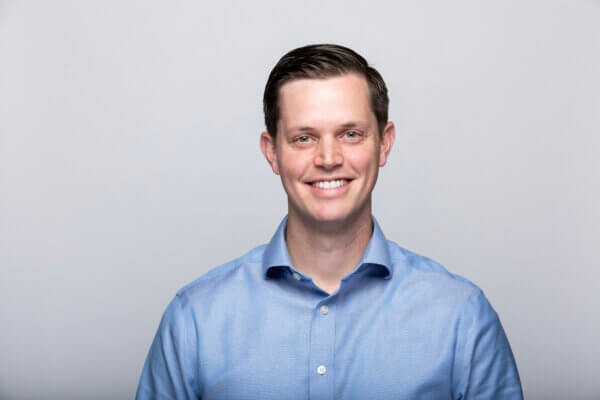
For 11 years, I sat in the back during Signature programs full of high-potential leaders, world-class faculty members, and impressive executive panelists, all of whom happened to be women. I commented, on multiple occasions over the years, how impactful that was for me―as someone who has always been in the majority in the rooms I was in―to hear their experiences, leadership challenges, and doubts. The amazing leaders in front of me had experienced more assumptions that they didn’t belong than I ever could have expected, and I found that both disappointing and inspiring.
Last month, I had the chance to sit in a similar room for another Signature Select program, but this time, I wasn’t the only man in the room. Since we have opened our U.S. programs to a coed audience this year, we have begun to see men taking advantage of the leadership development opportunities that our programs offer. These four men (out of 38 participants) were having an experience that I had only been able to describe to other men up to this point. They were the minority in a room of leaders.
Now don’t get me wrong. They were fully welcomed into the group. They were engaged. They participated. They learned a ton from our faculty and the leadership curriculum we have in Signature Select (which has never been about gender). What they may not have realized was how different it would “feel” to be different than everyone else in a subtle, but meaningful, way.
In a 2023 research study we conducted with our Signature Alumni (all women), we found that most respondents believed that inclusivity is a capability that can be built. However, to build it, leaders need exposure to real-life experiences that bring about new realizations and self-awareness. The top two ways to grow your inclusive leadership capability are to experience exclusion yourself, or to hear the experiences of others who have felt excluded. This program was an opportunity to build inclusive leadership skills in real time.
During the social aspects of our program, I noticed moments where the men, recognizing that the conversation happening around them was not something they were interested in or could relate to, would lean out. I’ve become more attuned to this through my own experiences, such as when my team, who are all women, are discussing manicures before a meeting starts. Those stand in stark contrast to all of the pre-meeting, football-focused conversations I’ve had when working with more men than women.
These experiences offer two options to become a more inclusive leader:
1) step back and allow the conversation to happen while recognizing the feeling of exclusion, or
2) lean into the conversation and seek to learn and/or relate however you can.
The first option allows leaders to create more self-awareness. They may not have noticed when others had felt excluded in past conversations, but to experience it allows them to better recognize the signs when it is happening. In the future, during such conversations, leaders can change the subject, or seek to engage those who are feeling excluded. The second option takes ownership of creating an inclusive culture. Leaders who lean in and seek to engage, even when the topic is not one of their own choosing, build connections. Those who are interested in the topic see the effort as admirable and respect the leader’s desire to take an interest in others who are different. Leadership, at its heart, is about role modeling. What better way to role model inclusion than to practice it when you are most uncomfortable?
As our leadership offerings continue to evolve and include more leaders with different experiences, there will be many opportunities for the participants to become more self-aware and more inclusive. I hope our work continues to make an impact on more leaders, so that they can ensure the experiences of the generations following in their footsteps provide a culture of inclusion and belonging. In the meantime, I’ll continue to be appreciative of, and inspired by, those who join us to share their own experiences and perspectives for the benefit of everyone else.
To learn more about how Signature Leaders accelerates rising leaders, while creating inclusive environments where everyone can thrive, contact us at info@signatureleaders.com.
About The Author
Robert Seymour: Partner & COO, Signature Leaders
 Rob is a strong business operator with a passion for advancing women in leadership. This passion stems from watching Carol’s career evolve and observing the challenges that his wife faced, and others still face, as women advancing in their careers.
Rob is a strong business operator with a passion for advancing women in leadership. This passion stems from watching Carol’s career evolve and observing the challenges that his wife faced, and others still face, as women advancing in their careers.
Carol’s unique approach to addressing these challenges, focused on providing the highest quality development experiences, compelled Rob to join Signature Leaders.
As Partner and COO of Signature Leaders, Rob drives operations, sales and marketing strategy, content development, and strategic initiatives. Rob oversees the team members at Signature Leaders responsible for program delivery and the Signature Collective, which focuses on alumni engagement. He manages about a dozen of Signature Leaders’ strategic client accounts, and he builds new offerings to meet the needs of all Signature clients. He also writes for Signature’s blog, and he edited and managed the production of Carol’s first book, Wisdom Warriors: Journeys Through Leadership and Life, which provides candid stories from over 70 accomplished business leaders, who share their hard-earned experiences to benefit the leaders rising through the ranks behind them.
In 2013, Rob began serving as the CFO for Signature Leaders while working full time as a Manager in Accenture’s Health practice. As a management consultant, Rob navigated clients through process and organizational changes during large-scale technology transformations.
Rob earned a BS in Economics from the University of Pennsylvania’s Wharton School, where he pitched for Penn’s Varsity Baseball Team for four years. He and his wife, Michelle, live in Los Angeles with their daughter (Blake) and son (Bowen). Rob enjoys coaching sports for his children’s teams, playing golf, finding ways to stay fit, and taking on new challenges in the form of home improvement projects.
